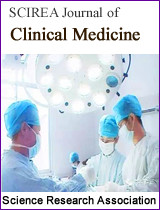Perioperative management of severe life-threatening airway obstruction caused by an accidentally inhaled foreign body in an 11-month-old child: A case report
DOI: 10.54647/cm32436 159 Downloads 13989 Views
Author(s)
Abstract
An 11-month-old child experienced a severe life-threatening airway obstruction due to an accidentally inhaled foreign body that had become lodged in his tracheal carina. He showed shortness of breath, continued to groan, and had three positive concave signs when he came to our emergent department. The blood gas analysis showed the following: pH 7.14, partial pressure of CO2 (PCO2) 79.4 mmHg. Then intubation (13 cm depth) with a 4.0-mm tracheal catheter was performed, followed by invasive mechanical ventilation. Chest computed tomography (CT) was also performed. However, 2 hours after invasive mechanical ventilation, PCO2 dramatic increased from 79.4 to 157mmHg. Emergency FAB removal using flexible bronchoscope was performed under general anesthesia to avoid sudden death because of severe asphyxiation. foreign body was found to lodge in his tracheal carina, and the cavity was nearly blocked. The AFB was removed on the first attempt without complications. The child recovered uneventfully and was discharged 2 days later. As result, we would urge caution that If an AFB is suspected, and PCO2 dramatic increased after invasive mechanical ventilation, emergency FAB removal should be performed immediately to avoid sudden death due to severe asphyxia. A standard pediatric flexible bronchoscope (2.8 mm outer diameter) can be inserted successfully via a size 4.0 endotracheal tube for AFB removal.
Keywords
airway foreign body removal, flexible bronchoscope, Intraoperative anesthetic management
Cite this paper
Junming Gong, Li Qiu, Fumin Zhao, Xiaoqin Jiang,
Perioperative management of severe life-threatening airway obstruction caused by an accidentally inhaled foreign body in an 11-month-old child: A case report
, SCIREA Journal of Clinical Medicine.
Volume 6, Issue 2, April 2021 | PP. 115-124.
10.54647/cm32436
References
| [ 1 ] | Foltran F, Ballali S, Rodriguez et al. Inhaled foreign bodies in children: a globalperspective on their epidemiological, clinical, and preventive aspects. Pediatr Pulmonol.2013;48(4):344-51 |
| [ 2 ] | Goussard P, Mfingwana L, Morrison J. Removal of distal airway foreign body with the help of fluoroscopy in a child. Pediatr Pulmonol.2020 03 ;55(3):E5-E7 |
| [ 3 ] | Ciriaco P, Negri G. Tracheobronchial Foreign Body in Small Children: The Combination of Flexible Bronchoscopy and the Urology Stone Retrieval Basket. Arch Bronconeumol.2019 ;55(3):174-175 |
| [ 4 ] | Hu S, Dong HL, Sun YY et al. Anesthesia with sevoflurane and remifentanil under spontaneous respiration assisted with high-frequency jet ventilation for tracheobronchial foreign body removal in 586 children. Paediatr Anaesth.2012 Nov ;22(11):1100-4 |
| [ 5 ] | Fidkowski CW, Zheng H, Firth PG. The anesthetic considerations of tracheobronchial foreign bodies in children: a literature review of 12,979 cases. Anesth Analg.2010;111(4):1016-25 |
| [ 6 ] | Dikensoy, O; Usalan, C; Filiz, A. Foreign body aspiration: clinical utility of flexible bronchoscopy. Postgrad Med J.2002 Jul ;78(921):399-403 |
| [ 7 ] | Chinski A, Foltran F, Gregori D. et al. Foreign bodies causing asphyxiation in children: the experience of the Buenos Aires paediatric ORL clinic. J Int Med Res.2010 ;38(2):655-60 |
| [ 8 ] | Trujillo, A. Airway foreign body in a premature newborn. Can J Anaesth.2020 Sep ;67(9) :1260-1261 |
| [ 9 ] | Ayed AK, Jafar AM, Owayed A. Foreign body aspiration in children: diagnosis and treatment. Pediatr Surg Int.2003 Aug ;19(6):485-8 |
| [ 10 ] | Ryu KH, Kim JA, Ko DC et al. Desflurane reduces intraoperative remifentanil requirements more than sevoflurane: comparison using surgical pleth index-guided analgesia. Br J Anaesth. 2018; 121(5):1115-1122 |
| [ 11 ] | Bürkle H, Dunbar S, Van Aken H. Remifentanil: a novel, short-acting, mu-opioid. Anesth Analg. 1996; 83(3):646-51 |
| [ 12 ] | Bi Y, Ma Y, Ni J et al. Efficacy of premedication with intranasal dexmedetomidine for removal of inhaled foreign bodies in children by flexible fiberoptic bronchoscopy: a randomized, double-blind, placebo-controlled clinical trial. BMC Anesthesiol. 2019 ;19(1):219 |

